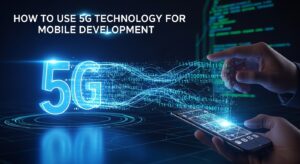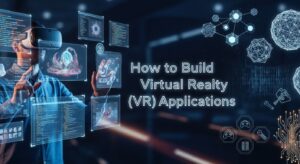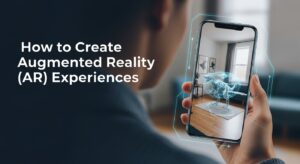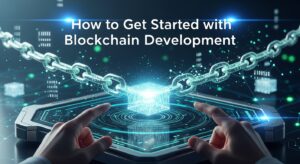When you think about the future of technology, what comes to mind? Perhaps artificial intelligence, advanced robotics, or space exploration? While these are indeed transformative, there’s one field that promises to revolutionize computing itself: quantum computing basics. This emerging technology harnesses the strange and powerful principles of quantum mechanics to process information in ways that classical computers simply cannot match.
Understanding quantum computing basics isn’t just for physicists and computer scientists anymore. As major tech companies like IBM, Google, and Microsoft invest billions in quantum research, professionals across industries are recognizing the need to grasp these fundamental concepts. Whether you’re a student, researcher, or technology enthusiast, this comprehensive guide will walk you through the essential principles that make quantum computing so revolutionary.
What Makes Quantum Computing Fundamentally Different?
Before diving into quantum computing basics, let’s establish why this technology represents such a dramatic departure from classical computing. Traditional computers process information using bits—simple on/off switches that represent either 0 or 1. Every calculation, every program, every digital interaction ultimately reduces to these binary states.
Quantum computers, however, operate on entirely different principles. They utilize quantum bits, or “qubits,” which can exist in multiple states simultaneously through a phenomenon called superposition. Imagine a coin that’s spinning in the air—it’s neither heads nor tails but both possibilities at once until it lands. This is analogous to how qubits behave.
This fundamental difference enables quantum computers to explore multiple solutions to a problem simultaneously, potentially offering exponential speedups for certain types of calculations. For problems involving optimization, cryptography, or molecular simulation, this advantage could prove transformative.
The 5 Essential Quantum Computing Basics Every Beginner Should Master
1. Understanding Qubits: The Building Blocks of Quantum Information
The foundation of quantum computing basics lies in understanding qubits. Unlike classical bits that must be either 0 or 1, qubits can exist in a “superposition” of both states simultaneously. This property allows a quantum computer with just 300 qubits to represent more possible states than there are atoms in the universe.
Qubits are typically implemented using various physical systems:
- Superconducting circuits (used by IBM and Google)
- Trapped ions (employed by companies like IonQ)
- Photons (utilized in photonic quantum computers)
- Topological qubits (Microsoft’s approach)
Each implementation has unique advantages and challenges, but they all harness quantum mechanical properties to store and process information in fundamentally new ways.
2. Superposition: Computing with Multiple Possibilities
Superposition represents one of the most counterintuitive aspects of quantum computing basics. When a qubit is in superposition, it exists in all possible states until measured. This isn’t simply uncertainty about the state—the qubit genuinely embodies multiple possibilities simultaneously.
Consider searching through a massive database. A classical computer must check entries sequentially or use sophisticated indexing. A quantum computer in superposition can, in principle, examine all possibilities at once. This parallel processing capability is what gives quantum computers their potential for exponential speedup in specific applications.
However, superposition is fragile. Environmental interference, called “decoherence,” can collapse the superposition and destroy the quantum advantage. This is why quantum computers operate at temperatures near absolute zero and require sophisticated error correction.
3. Entanglement: The “Spooky Action at a Distance”
Einstein famously called quantum entanglement “spooky action at a distance,” and it remains one of the most mysterious aspects of quantum computing basics. When qubits become entangled, measuring one instantly affects the others, regardless of physical separation.
In quantum computing, entanglement creates correlations between qubits that classical systems cannot replicate. These correlations enable quantum algorithms to solve certain problems more efficiently than any classical algorithm could. For example, entanglement is crucial for:
- Shor’s algorithm for factoring large numbers
- Grover’s algorithm for searching databases
- Quantum simulation of molecular systems
Understanding and controlling entanglement is essential for building practical quantum computers and represents one of the most active areas of quantum computing research.
4. Quantum Gates: Manipulating Information at the Quantum Level
Just as classical computers use logic gates (AND, OR, NOT) to process information, quantum computers use quantum gates to manipulate qubits. However, quantum computing basics require understanding that quantum gates operate very differently from their classical counterparts.
Common quantum gates include:
Gate Type | Function | Symbol |
Pauli-X | Quantum NOT gate | X |
Hadamard | Creates superposition | H |
CNOT | Conditional operation | ⊕ |
Phase | Adds phase shift | P |
Quantum gates are reversible, meaning information is never destroyed during computation. This reversibility is a fundamental requirement of quantum mechanics and distinguishes quantum operations from classical logic gates.
5. Quantum Algorithms: Solving Problems with Quantum Advantage
The ultimate goal of mastering quantum computing basics is understanding how quantum algorithms leverage these principles to solve real-world problems. Several landmark algorithms demonstrate quantum computing’s potential:
- Shor’s Algorithm can factor large integers exponentially faster than the best known classical algorithms. This has profound implications for cryptography, as many current encryption methods rely on the difficulty of factoring large numbers.
- Grover’s Algorithm provides a quadratic speedup for searching unsorted databases. While less dramatic than Shor’s exponential advantage, this improvement is still significant for many optimization problems.
- Variational Quantum Eigensolvers (VQE) represent a class of hybrid quantum-classical algorithms particularly promising for near-term quantum computers. These algorithms could revolutionize chemistry and materials science by accurately simulating molecular behavior.
Real-World Applications: Where Quantum Computing Basics Meet Practical Problems
Understanding quantum computing basics becomes more compelling when you see their practical applications. Several industries stand to benefit significantly from quantum computing advances:
- Drug Discovery and Healthcare: Quantum computers could simulate molecular interactions with unprecedented accuracy, potentially accelerating pharmaceutical research and enabling personalized medicine approaches.
- Financial Services: Portfolio optimization, risk analysis, and fraud detection could all benefit from quantum computing’s ability to explore multiple scenarios simultaneously.
- Logistics and Supply Chain: Route optimization, inventory management, and resource allocation represent natural applications for quantum optimization algorithms.
- Artificial Intelligence: Quantum machine learning algorithms could enhance pattern recognition and enable new forms of AI that classical computers cannot achieve.
- Cryptography and Security: While quantum computers threaten current encryption methods, they also enable quantum cryptography, offering theoretically unbreakable security through quantum key distribution.
Getting Started: Practical Steps to Learn Quantum Computing
Now that you understand the fundamental quantum computing basics, how can you begin practical exploration? Several resources and platforms make quantum computing accessible:
- IBM Quantum Experience provides free access to real quantum computers through the cloud. Their Qiskit framework offers excellent tutorials and documentation for beginners. You can start with simple circuits and gradually work up to more complex algorithms.
- Microsoft’s Quantum Development Kit includes the Q# programming language and comprehensive educational materials. Their quantum simulator allows you to test algorithms without accessing physical quantum hardware.
- Google’s Cirq focuses on near-term quantum computing applications and provides tools for designing quantum circuits and algorithms.
- Amazon Braket offers access to quantum computers from multiple vendors, allowing you to compare different quantum computing approaches.
For those preferring structured learning, several universities now offer online quantum computing courses. MIT, Stanford, and the University of Waterloo all provide excellent introductory programs that build upon these quantum computing basics.
Overcoming Common Misconceptions About Quantum Computing
As you delve deeper into quantum computing basics, you’ll encounter several persistent misconceptions that can hinder understanding:
- Misconception 1: Quantum computers will replace classical computers entirely.
- Reality: Quantum computers excel at specific types of problems but won’t replace classical computers for everyday tasks.
- Misconception 2: Quantum computers can solve any problem exponentially faster.
- Reality: Quantum speedup applies only to certain problem types, and many algorithms show modest or no quantum advantage.
- Misconception 3: Quantum computing is purely theoretical.
- Misconception 4: Understanding quantum physics is prerequisite to quantum computing.
- Reality: While helpful, you can learn quantum computing basics and even develop quantum programs without deep physics knowledge.
The Current State and Future of Quantum Computing
Understanding where quantum computing stands today helps contextualize these quantum computing basics within the broader technology landscape. We’re currently in the “Noisy Intermediate-Scale Quantum” (NISQ) era, where quantum computers have enough qubits to be interesting but too much noise to be fully practical for most applications.
Current quantum computers typically have:
- 50-1000 qubits
- High error rates requiring sophisticated correction
- Limited coherence times
- Specialized applications rather than general-purpose computing
However, progress is accelerating rapidly. Research from institutions like MIT and companies like Atom Computing suggests that quantum computers with millions of error-corrected qubits may arrive within the next decade.
Building Your Quantum Computing Foundation
As we conclude this exploration of quantum computing basics, remember that this field represents one of the most exciting frontiers in modern technology. The principles you’ve learned, qubits, superposition, entanglement, quantum gates, and algorithms—form the foundation for understanding how quantum computers will reshape industries from pharmaceuticals to finance.
The journey into quantum computing requires patience and practice. Start with simple concepts, experiment with quantum programming platforms, and gradually build your understanding through hands-on experience. The quantum revolution is just beginning, and understanding these quantum computing basics positions you at the forefront of transformative technology.
Whether you’re seeking career opportunities in quantum computing, planning research directions, or simply satisfying curiosity about this revolutionary field, mastering these fundamentals opens doors to a future where the impossible becomes possible through the power of quantum mechanics.
The quantum future is arriving faster than many expected. By understanding these quantum computing basics today, you’re preparing yourself for tomorrow’s technological landscape, where quantum advantages will drive innovation across countless fields and applications.











